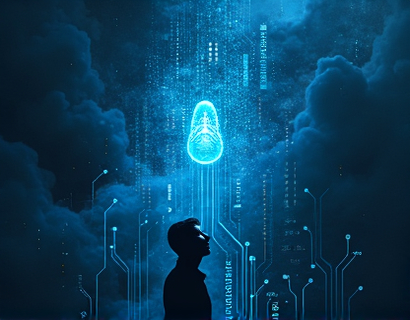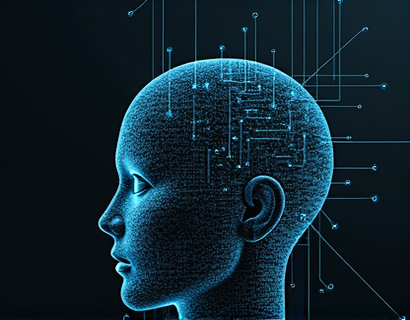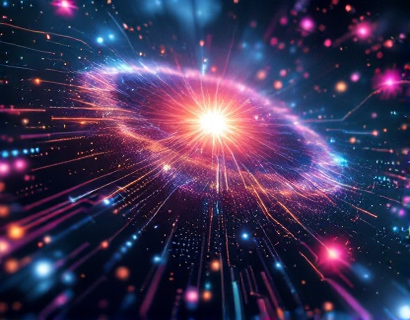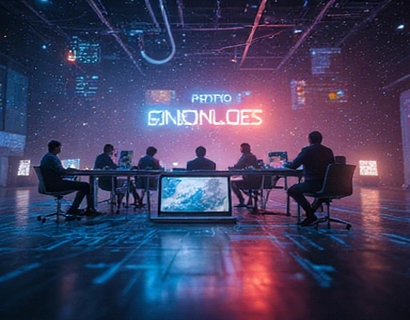AI-Powered Cosmic Learning: A New Era of Interactive Exploration
In the realm of education and space exploration, a groundbreaking tool has emerged, leveraging the power of artificial intelligence to create a personalized and interactive journey through the cosmos. This innovative platform redefines how educators and space enthusiasts engage with the vastness of space, offering a tailored learning experience that adapts to individual interests and knowledge levels. By integrating AI technology, this tool not only makes space and astronomy more accessible but also transforms the way we learn about the universe.
Personalized Learning Paths
The core of this AI-driven learning tool lies in its ability to customize the educational experience for each user. Upon entering the platform, users are greeted with a range of customizable settings that allow them to set their learning objectives, preferred topics, and the depth of information they wish to explore. For educators, this means creating lesson plans that align with curriculum standards while providing students with an engaging and interactive way to learn about celestial bodies and astronomical phenomena. Space enthusiasts can delve into specific areas of interest, whether it's the latest discoveries in exoplanets, the intricacies of black holes, or the history of space exploration.
Interactive Exploration Features
The platform offers a variety of interactive features designed to enhance the learning experience. Users can embark on virtual tours of the solar system, explore distant galaxies, and even simulate space missions. These interactive elements are powered by advanced AI algorithms that respond to user inputs, providing real-time feedback and additional information based on the user's interactions. For instance, when a user selects a planet, the AI can present detailed data about its atmosphere, composition, and notable features, along with high-resolution images and videos.
Customizable Settings for Diverse Learning Needs
One of the most significant advantages of this AI-powered tool is its flexibility. Users can adjust various settings to match their learning preferences and goals. For educators, this includes options to create custom quizzes, assignments, and assessments that align with specific learning outcomes. The platform can also adapt the difficulty level of content, ensuring that learners of all ages and backgrounds can engage with the material in a way that is both challenging and accessible. For example, a teacher can set the system to provide simpler explanations for younger students while offering more complex concepts for advanced learners.
Enhanced Engagement Through AI Chat Agent
A key component of this learning tool is the AI chat agent, designed to guide users through their cosmic journey. This chat agent acts as a personal guide, answering questions, providing additional resources, and offering insights based on the user's current location in their learning path. The chat agent uses natural language processing to understand and respond to user queries, making the learning experience feel more conversational and less like interacting with a static database. This real-time interaction keeps users engaged and motivated, as they can ask questions and receive immediate answers without interrupting their exploration.
Comprehensive Database of Astronomical Knowledge
The platform boasts an extensive database of astronomical data, curated by experts in the field. This database is continuously updated with the latest research and discoveries, ensuring that users always have access to the most current information. The AI-driven content delivery system sifts through this vast repository and presents information in a structured and easy-to-understand format. Users can explore topics ranging from the basics of astronomy to advanced theoretical concepts, all presented with visual aids and interactive elements that enhance comprehension.
Visual Learning with High-Resolution Imagery and Simulations
Visual learning is a crucial aspect of this platform, as it helps users grasp complex concepts more easily. High-resolution images and videos of celestial bodies, cosmic events, and space missions are integrated throughout the content. Additionally, the platform offers interactive simulations that allow users to visualize phenomena such as planetary orbits, supernova explosions, and the expansion of the universe. These visual tools are particularly beneficial for students who are visual learners, as they can see and interact with the material in a way that complements traditional text-based learning.
Collaborative Learning Opportunities
Recognizing the importance of collaboration in education, the platform includes features that facilitate group learning and discussion. Users can join virtual classrooms or discussion forums where they can share insights, ask questions, and collaborate on projects. Educators can create classes and assign group activities, fostering a sense of community and peer learning. The AI chat agent can also mediate these discussions, providing guidance and ensuring that the conversation stays on topic and educational.
Adaptive Learning Algorithms
The AI algorithms at the heart of this platform are designed to adapt to each user's learning style and progress. By analyzing user interactions and performance, the system can identify areas where a user may be struggling and adjust the content accordingly. For example, if a user consistently shows difficulty with a particular concept, the AI can provide additional resources, such as tutorials or interactive exercises, to help reinforce the learning. This adaptive approach ensures that users are always challenged appropriately and can achieve their learning goals efficiently.
Accessibility and Inclusivity
Accessibility is a core principle of this platform, ensuring that learning about the universe is inclusive for all. The platform is designed to be user-friendly and accessible to individuals with various abilities. Features such as text-to-speech, adjustable text sizes, and high-contrast modes make the content accessible to users with visual impairments. Additionally, the platform supports multiple languages, breaking down language barriers and making space education available to a global audience.
Real-World Applications and Future Prospects
The applications of this AI-powered cosmic learning tool extend beyond the classroom and personal interest. Educators can use the platform to enhance their teaching methods, providing students with a more engaging and effective learning experience. The tool can also serve as a valuable resource for science communicators, amateur astronomers, and anyone interested in staying updated on the latest space news and discoveries. Looking ahead, the platform has the potential to integrate with emerging technologies such as virtual reality and augmented reality, offering even more immersive learning experiences.
Conclusion
The integration of AI technology in cosmic learning represents a significant leap forward in education and space exploration. By providing a personalized, interactive, and comprehensive learning experience, this platform makes the universe accessible and engaging for educators and space enthusiasts alike. As the platform continues to evolve, it will undoubtedly play a crucial role in inspiring the next generation of scientists, explorers, and thinkers. Whether you are a student, educator, or simply someone with a curiosity about the cosmos, this AI-driven tool offers a unique and enriching way to explore the wonders of the universe.










































